So, on the list of "urban homesteading things I want to do," you will find making cheese, making kefir, making yogurt, canning/preserving lots of food over the summer and eating it over the winter (I want to be a locavore so badly but I live in a place with a five-month growing season so that's not going to happen any time soon), homebrewing beer, wine, and hard cider, pressing my own cider, making ten tons of jam, making bread from my own sourdough starter, growing my own food, lactofermenting everything, and sprouting all my grains and legumes before cooking them.
While I have the capability to do pretty much all of these things, even if I don't yet have the equipment, I have two shelves in a small pantry for all my food and I share a standard-size fridge and small freezer with three other people. This equates to having no space for food preservation. I've had some luck with sprouting beans and rice, so the sprouting thing isn't a total loss. All that's left is gardening, which I love, but I have one little problem.
I don't have a yard. There is a very nice west-facing grassy area where everyone in this little strip of four-plexes and two-story apartments walks their dogs and then doesn't clean up their shit, but that's it. The east-facing front yard is 90% driveway, 5% "on the north side of the neighbor's garage," and 4.5% trees and landscaping features. The south side of the building is three units down, so that's out. We do get the north side of the building. Yay, full shade plants!
 |
| Bok Choy seedlings demonstrating the value of full shade plants by sitting in a rainy window and doing pretty damn good, if I do say so myself. |
As the old saying goes, For root or fruit, sun all day; for leaves, shade's okay! or something to that effect. It's supposed to rhyme, and I have zero sense of what rhymes with what. Anyway, the point is that leafy greens are best grown in cool weather in the shade, and anything with an edible root (carrot, potato, radish, parsnip, beet, etc) or seed-containing fruit (such as squash, eggplant, tomato, cucumber, berries, etc) should get full sunlight.
The north side of the building is going to be home to pots with cool-weather, shade-loving crops: celery, and assorted greens including kale and bok choy. These might live on the west side along with peas until it gets too hot and bright.
The west-facing cement pad gets three pots with sun-long, warm weather crops: an eggplant, a tomato, and a zucchini along with carrots, parsnips, beets, and marigolds. Other flowers or herbs might be added in as I find out what companion plants appeal to me. When it gets too hot for the peas, I'll plant beans in their pot.
The front walk might get one of the sun-lovers once the sun makes its way back up to the northern hemisphere, and it might also be a staging area for the cool-weather crops, since they should probably get at least a little sun. In fact, that's probably where the peas are going to live, along with some daikon radishes.
Because I am impulsive, I have a small problem in paradise: I have a pot with celery, kale, parsnips, and daikon radishes. This happened before I found out that root crops need sunshine, too, and also before I found out that celery counts as a leafy green in that it loves shade. My thought process was that if radishes are cool-weather crops (they are), like leafy greens, then they probably like shade, right? And I really want parsnips right fucking now. Oh, hey, kale seeds!
 |
| Note the radish sprouts searching desperately for sunshine. |
Anyway, I'll get to find out if root vegetables can survive me transplanting them.
Now, on to the entire reason that I sat down to write this post: what the hell can I get away with growing in a container?
Lots, actually. Pretty much every edible plant can be grown successfully in a container, including corn and potatoes. Tomatoes, eggplants, cabbage, cucumbers, summer squash, peas, beans, all manner of leafy greens, and most root vegetables will do pretty well in pots; I'm less certain about large viney squash and melons.
And now, for your gardening pleasure, a by-no-means-comprehensive list of plants that are allegedly happy in containers, with the varieties of each plant that are sold as "compact," "dwarf," or "good for containers" included. Full disclaimer: I have attempted to grow exactly none of these. This list also doesn't discriminate between hybrids and heirloom varieties, either.
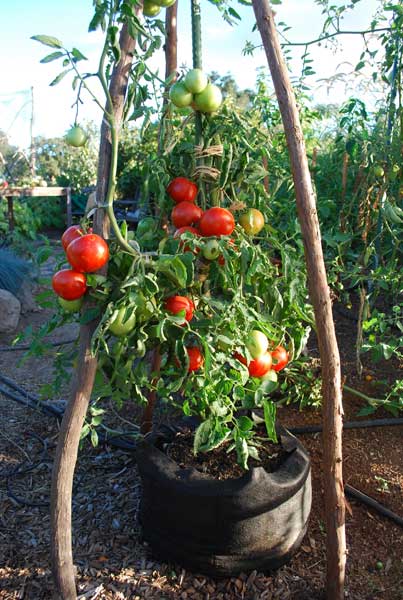 |
| Photo from www.grow-it-organically.com |
- Tomatoes: look for dwarf, determinate, bush types if size is a HUGE problem (ahahaha no pun intended), but indeterminate types can grow in any pot if it's big enough. The internet highly advises us to seek out heirlooms, especially indeterminate kinds that are "well-behaved" in pots because the flavor is said to be much better than dwarf types. Many of the varieties on this list are indeterminates that have grown well in pots.
- Black Krim
- Japanese Black Trifele
- Sungold (cherry)
- Wapsipinicon Peach (fuzzy)
- Stupice (I'll be growing this one)
- Silvery Fir Tree
- Brandywine
- Riesentraube (cherry/grape)
- Cherokee Green (green tomato)
- Polish Linguisa (paste)
- Hahms Gelbe Topftomate (cherry)
- Black Seaman's
- Czech's Bush
- Sophie's Choice
- Whippersnapper (cherry)
- Korlik (cherry)
- Principe Borghese (cherry)
- Supersweet 100
- Manitoba
- New Yorker
- Blue Champion
- Green Zebra
- Paul Robeson
- Carmello
- Baxter's Early Bush Cherry
- Elfin
- Lyana
- Micro Tom
- Patio F
- Red Robin
- Tiny Tim
- Totem
- Yellow Pygmy
http://www.hgtvgardens.com/tomatoes/which-tomatoes-to-grow-on-my-patio
http://containergardening.about.com/od/containergardening101/f/Tomato_Varieties.htm
http://tomatoheadquarters.com/container-gardening-2/growing-heirloom-tomatoes-in-pots/
http://www.tomatodirt.com/growing-tomatoes-in-pots-small-containers.html
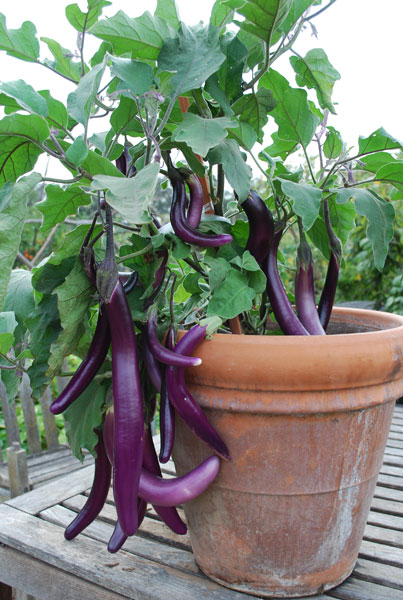 |
| Photo from www.grow-it-organically.com |
- Eggplant: I'm not a fan of eggplant from the store, but those are always the big fat overripe purple ones. This is a problem because I'm a vegetarian, and eggplant is sort of the vegetarian steak (LIES it is not like steak at all! Eggplant is pretty damn bland all by its lonesome; please do not serve "eggplant steaks" or "eggplant sandwiches" to vegetarians unless we express definite interest), so I intend to find a variety of eggplant that I like. Represented here are some lighter-colored and/or less fat varieties. Japanese eggplants are also nice because they are slender and not huge and fat. I'm currently attempting to germinate "Long Purple" seeds; the experiment will continue until I find one I like or give up on eggplant altogether.
- Fairy Tale
- Hansel
- Gretel
- Rosa Bianca
- Little Fingers
- Orient Express
- Applegreen
- Beatrice
- Purple Fingerling
- Calliope
- Orlando
- Bambino (Baby Bell)
- Bride Asian
- Ophelia
http://www.motherearthnews.com/organic-gardening/eggplant-at-a-glance-zm0z12djzkin.aspx#axzz2xJocAEto
http://www.vegetablegardener.com/item/10658/have-a-small-space-garden-try-dwarf-vegetable-varieties
http://www.extension.iastate.edu/Publications/PM870B.pdf
 |
| Photo from http://blog.seattlepi.com/ |
- Cucumbers: non-bush varieties can be trellised, but bush varieties are naturally compact and don't require as much vertical space. I desperately want a bush pickle variety, but I don't know if I'll actually enjoy homemade pickles so I'm practicing self-control and waiting until next year while I invest a small amount of time, effort, and money on one batch of homemade pickles with store-bought cukes.
- Salad Bush Hybrid
- Bush Champion
- Picklebush
- Spacemaster
- Hybrid Bush Crop
- Midget Bush Pickler
- Bush Pickle
- H-19 Little Leaf
- Bush Crop
- Salad Bush
- Patio Pickle
http://ohioline.osu.edu/hyg-fact/1000/1645.html
http://www.vegetablegardener.com/item/10658/have-a-small-space-garden-try-dwarf-vegetable-varieties
http://www.extension.iastate.edu/Publications/PM870B.pdf
http://www.vegetablegardener.com/item/10658/have-a-small-space-garden-try-dwarf-vegetable-varieties
http://www.extension.iastate.edu/Publications/PM870B.pdf
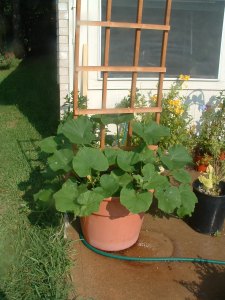 |
| Photo from http://zippysgarden.wordpress.com/ |
- Squash, separated by winter and summer squash varieties. Winter can be harvested in the fall and stored someplace cool for months, while summer goes bad a few days off the vine and is best when small and tender. Anything that doesn't say "bush" will almost certainly vine, except the zucchinis, which are always bushes.
- Burpee's Butter Bush (winter)
- Burpee's Bush Table Queen (winter)
- Bushkin Pumpkin
- Jackpot Pumpkin
- Spirit Pumpkin
- Baby Bear Pumpkin
- New England Pie Pumpkin
- Sugar Treat Pumpkin
- Jack-Be-Little Pumpkin
- Sweetie Pie Pumpkin
- Aspen Pumpkin
- A&C Hybrid #300 Pumpkin
- Jack of All Trades Pumpkin
- Harvest Moon Pumpkin
- Bush Acorn (winter)
- Bush Crookneck (summer)
- Hybrid Jackpot Zucchini
- Black Magic Zucchini (I'll be growing this one)
- Gold Rush Zucchini
- Peter Pan Scallop (summer)
- Sunburst Scallop (summer)
- Dwarf Summer Crookneck (summer)
- Melons: they still vine, as far as I can tell, so indoors or shared spaces are probably not good places to plant melons, unless you have the time and supplies to convince them to go vertical. Sigh. There are few things nicer than a cantaloupe when it's still warm from the sun.
- Sugar Baby Watermelon
- Golden Midget Watermelon
- Yellow Doll Watermelon
- Honey Red Watermelon
- Minnesota Midget Cantaloupe
- Emerald Green Cantaloupe
- Green Nutmeg Cantaloupe
- Golden Jenny Cantaloupe
- Petit Gris de Rennes Cantaloupe
- Sakata's Sweet Cantaloupe
- Sleeping Beauty Cantaloupe
- Savor Cantaloupe
- I looked for dwarf/miniature honeydew melon varieties and couldn't find any listed, although every site that talks about growing melons in containers mentions dwarf honeydew varieties. Heckle your local garden store employees (not hardware-store-that-happens-to-sell-garden-supplies employees, though) if you're desperate for homegrown honeydews.
http://www.vegetablegardener.com/item/10658/have-a-small-space-garden-try-dwarf-vegetable-varieties
http://www.annies-gardens.com/4-steps-growing-watermelon-containers.html
http://www.annies-gardens.com/4-steps-growing-watermelon-containers.html
 |
| Photo from http://janedata.wordpress.com/ |
- Beans: pole beans will grow happily in containers if provided with a something to grow up, so they are perfect if you have lots of vertical space. Bush beans are naturally compact but require more horizontal space, so they're ideal for people without much vertical space.
- Derby (bush)
- Provider (bush)
- Topcrop (bush)
- Royal Burgundy (bush)
- Dragon's Tongue (bush) (I'll be growing this one)
- Tongue of Fire (bush)
- Cherokee Trail of Tears (bush) (also: nothing like a little white guilt with your dinner)
- Trionfolo Violetto (pole)
- Scarlet (pole)
- Sunset (pole)
- Golden Sunshine (pole)
- Chinese Long/Yard Long (pole)
- Contender
- Blue Lake 247
- Tendergreen Improved
- Kentucky Dreamer
- Slenderette
- Beets: any variety should grow pretty well in containers if given enough space, or else the bulb won't develop. I desperately want to like beets. They are so healthy, but I've had exactly one good experience with beets, and that was in an "apple and beetroot juice" when I was roaming London with a nasty cold after my computer got stolen in the last week of my five-month semester abroad. If any part of the beet is involved other than its juice (no pulp, either, thanks), I don't like it. But, but, healthy! So I'll be growing Cylindra in a hail-mary attempt to like them because I grew them. The logic here is flawed, I know. But, beets should do well in Montana and I do tend to like vegetables that I've grown myself more than storebought ones.
- Red Ace
- Ruby Queen
- Cylindra (I'll be growing these: they are carrot-shaped, not globes, so they do better in smaller spaces)
http://www.extension.iastate.edu/Publications/PM870B.pdf
http://www.seedsnow.com/products/beet-cylindra
BEET UPDATE: Roasted beets are fucking delicious. I got one at the Winter Farmer's Market. Here is how I cooked it:
1. Wash off all the dirt, cut off the tops, and cut into chunks. DO NOT PEEL!
2. Place in a pan on parchment paper, drizzle with oil, and sprinkle on a bit of salt (season to taste, in other words).
3. Roast at, say, 350 F until you can stab them pretty easily with a fork. My beet took something over half an hour for large-garlic-clove-sized chunks. The same method should work on the grill if you wrap them in foil
4. Devour, skin and all.
5. Be amazed at how tasty beets can be, because damn.
I think the difference is that it wasn't canned or preserved in any way, which is the only way I've ever had beets (aside from juiced). Night and day, man. Night and day.
http://www.seedsnow.com/products/beet-cylindra
BEET UPDATE: Roasted beets are fucking delicious. I got one at the Winter Farmer's Market. Here is how I cooked it:
1. Wash off all the dirt, cut off the tops, and cut into chunks. DO NOT PEEL!
2. Place in a pan on parchment paper, drizzle with oil, and sprinkle on a bit of salt (season to taste, in other words).
3. Roast at, say, 350 F until you can stab them pretty easily with a fork. My beet took something over half an hour for large-garlic-clove-sized chunks. The same method should work on the grill if you wrap them in foil
4. Devour, skin and all.
5. Be amazed at how tasty beets can be, because damn.
I think the difference is that it wasn't canned or preserved in any way, which is the only way I've ever had beets (aside from juiced). Night and day, man. Night and day.
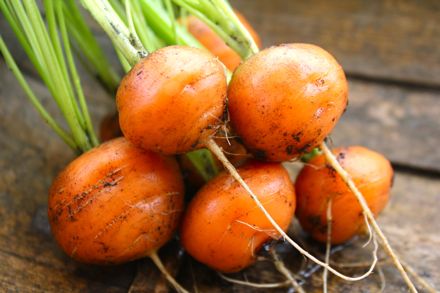 |
| Photo from http://mytinyplot.com/ |
- Carrots: the only limitation is the size of your pot. If it's too shallow, the carrots will just be shorter. If you're really nervous about this, go for one of the round varieties (I've included one on the list) and remember that you don't have to peel it if there's nothing particularly nasty in your dirt.
- Danver's Half Long
- Little Finger
- Nantes Half Long
- Scarlet Nantes (I'll be growing these)
- Chantenay Red Core
- Adelaide
- Paramex (round)
- Flyaway
- Maestro
http://www.ufseeds.com/Container-Gardening-Vegetables.html
http://www.vegetable-garden-guide.com/growing-carrots.html
http://www.vegetable-garden-guide.com/growing-carrots.html
 |
| Photo from http://bigrawblog.blogspot.com/ |
- Greens: have nice shallow root systems, so they work really well in containers. They also like shade, another plus for the indoor gardener or the heavily-shaded gardener. Not so good for the gardeners with full sun and only full sun. I really only included this list for people who can't function without lists.
- Lettuce
- Black Seeded Simpson
- Green Ice
- Green Salad Bowl
- Red Sails
- Red Salad Bowl
- Buttercruch
- Tom Thumb
- Spinach
- Long Standing Bloomsdale
- Melody
- Tyee
- Renegade
- Swiss Chard
- Fordhook Giant
- Lucullus
- Kale
- Dwarf Blue Scotch
http://www.ufseeds.com/Container-Gardening-Vegetables.html
http://ohioline.osu.edu/hyg-fact/1000/1647.html
http://www.grow-it-organically.com/cabbage-varieties.html
- Cabbage: I'm completely sold on the benefits of lactofermented sauerkraut, but I'm not ready to plunk down a lot of time and effort on a plant that I might not have a use for. I certainly don't have space for it. Anyway, cabbages will grow happily in containers, but I've tried to include mostly little guys to make up for the other vegetables where I couldn't find much information on size. In the space I've got, I'd only have space for one plant anyway.
- Baby Head
- Dwarf Morden
- Minicole
- Fast Ball
- Flash
- Parel
- Gonzales
- Red Express
- Savoy Express (not a head cabbage)
- Primero
- Ruby Ball
- Kaitlin
- Danish Ballhead
- Storage No. 4
 |
| Photo from www.grow-it-organically.com |
http://ohioline.osu.edu/hyg-fact/1000/1647.html
http://www.grow-it-organically.com/cabbage-varieties.html
 |
| Photo from http://www.gardeningclub.com/ |
- Corn: still needs vertical space, and you should plant multiple plants within a few feet of each other so they can pollinate each other. Stick with one variety, though, because corn plays fair with mendelian genetics and can make some horrible hybrids.
- Kandy Korn
- Early Gold Bantam
- Sweet Spring Treat (short)
- Sweet Painted Mountain (short)
- Trinity (short)
- Chires Baby Sweet (short)
- Broccoli: just in case you're interested. I'm not growing any because I'm not big on broccoli.
- Calabrese
- Waltham 29
- Coronado Crown
- Cauliflower: like broccoli, I'm not that big on growing it myself. It takes up a lot of space and you only really get one harvest per plant.

Photo from http://janedata.wordpress.com/
- Snow Crown
- Early Dawn
- Early Snowball
- Peas: yet another plant that should grow well in containers regardless of variety. Look for compact types if vertical space is an issue, or you don't want the hassle of trellising and staking. Some of these require trellising.
- Little Marvel (I'll be growing these)
- Sugar Snap
- Tom Thumb
- Early Frosty
- Oregon Sugar Pod
- Markana
- Gemini
- Snow peas in general
- Sugar Snap-type peas in general
- Burpee's Peas-in-a-Pot (I am all kinds of getting these next year)
 |
| Photo from www.burpee.com |
http://www.ufseeds.com/Container-Gardening-Vegetables.html
http://containergardening.about.com/od/vegetablesandherbs/ss/PeaPlantingSBS.htm
http://www.bestgardening.com/bgc/howto/vegepeas01.htm
http://www.burpee.com/vegetables/peas/pea-peas-in-a-pot-prod002732.html
http://containergardening.about.com/od/vegetablesandherbs/ss/PeaPlantingSBS.htm
http://www.bestgardening.com/bgc/howto/vegepeas01.htm
http://www.burpee.com/vegetables/peas/pea-peas-in-a-pot-prod002732.html
 |
| Photo from http://www.homesteadsurvivalist.com/ |
- Potatoes: pretty much any potato, including sweet potatoes, will grow happily in grow bags or large buckets. Just remember to plant your seed potatoes at the bottom of the container and gradually add more dirt as the plants get taller. Potatoes love being in hills. However, here's a few varieties that are supposed to grow especially well in containers. I'll be growing some purple fingerlings that I got from the winter farmer's market because I'm a rebel.
- Red Pontiac
- Kennebec
- Yukon Gold
- Adirondack Blue
- Radish: I only like daikon radishes cleverly cooked into delicious foods, not spicy raw radishes. If you're into the little round spicy kind, pretty much any of them can be grown in containers. The only problem with daikons is that you need a nice deep pot, which I have. Here are a few varieties for the list-dependent who don't know if they like radishes yet.
- Cherry Belle
- Easter Egg
- Champion
- Pepper: I don't even like bell peppers 99% of the time. I'll eat the damn things if they're in my food or offered to me, but I don't do spicy peppers at all. I put this list here because I'm a nice person and also a masochist.
- Anaheim Chili (hot)
- Sweet Banana (mild)
- Early Jalapeno (hot)
- Corno Di Toro (frying, whatever that means)
- Cubanelle (hot)
- Cherrytime (hot)
- Apple (hot)
- Red Cherry (hot)
- Red Chili (hot)
- Lady Bell (bell)
- Gypsy (mild)
- Crispy (mild)
- New Ace (bell)
- Bell Boy (bell)
- Sweet Chocolate (bell)
- California Wonder (bell)
- Early Thickset (bell)
http://www.ufseeds.com/Container-Gardening-Vegetables.html
http://www.ifplantscouldtalk.rutgers.edu/planttalk/article.asp?ID=17
http://www.ifplantscouldtalk.rutgers.edu/planttalk/article.asp?ID=17
- Berries: since berries are perennials, you'll have to figure out how to overwinter them if you live in a cold climate. Because pots are exposed on all sides to the cold, the soil is more likely to freeze solid and kill your plants. However, most berries will grow happily in pots provided you keep them warm enough.
- Blueberries: actually grow best in pots because they require high soil acidity, and it's much easier to modify your soil when it's just a few pots. Try to group two or three together to improve harvests.
- Top Hat (dwarf)
- Peach Sorbet (dwarf)
- Sunshine Blue (semidwarf)
- Sunshine Dwarf (dwarf)
- Northblue (half high)
- Northsky (half high)
- St. Cloud (half high)
- Polaris (half high)
- Chippewa (half high)
- Northland (half high)
- North Country (half high
- Raspberries: contained spaces are great because raspberries propagate themselves via their roots. They only produce fruit on new growth, so gardeners are advised to cut them down to an inch or so above the soil every fall. This is, funnily enough, perfect for overwintering in the garage, if your garage doesn't go too far below freezing. Mine isn't insulated and pots freeze solid. A couple of these varieties are extremely cold-hardy, but I don't know if that extends to pots.
- Autumn Bliss (medium canes)
- Meeker (upright)
- Heritage (tall canes, needs staking)
- Nova (upright)
- Boyne (upright)
- Tulameen (long canes)
- Fall Gold (short canes)
- Raspberry Shortcake (dwarf)
- Strawberries: any variety will produce fruit in containers, but shoot for day neutral and alpine varieties, since June bearing and everbearing varieties tend to need more space, and, in the case of June bearers, send out lots of runners. I was growing some white pineapple alpines, but I repotted them and they all died. This is why I'm concerned about transplanting things.
- Evie (day neutral)
- Albion (day neutral)
- Seascape (day neutral) (I just bought one of these)
- Mignonette (alpine)
- Rugen Improved (alpine)
- Yellow Wonder (alpine)
- Any Fragaria Vesca variety (alpine) (I'll be growing two of these: White Soul and Woodland Strawberry, and I killed a bunch of Pineberry Fruit when I tried to repot them)
- Blackberries: thornless varieties exist! Most if not all of these are thornless, making them easy to handle if you need to move them. It also looks like most of them require trellising, so space requirements might be way too high for apartment dwellers without a roof.
- Loch Maree (upright)
- Black Satin (upright)
- Chester (upright)
- Hull Thornless (upright)
- Boysen (trailing)
- Logan (trailing)
- Arapaho (upright)
- Navaho (upright)
- Apache (upright)
- Helen (upright)
- Loch Ness (upright
- Triple Crown (upright)
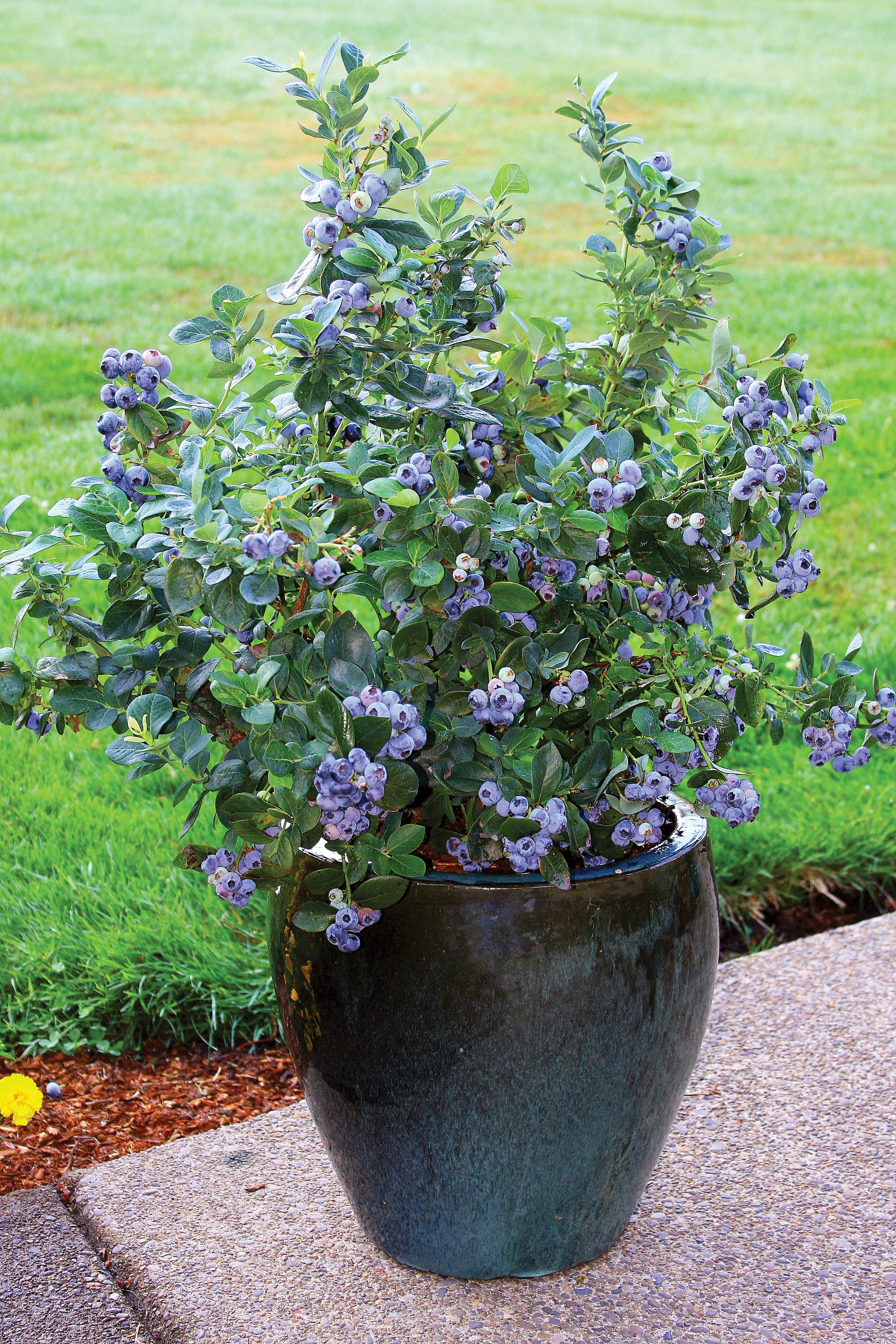 |
| Photo from www.fallcreeknursery.com |
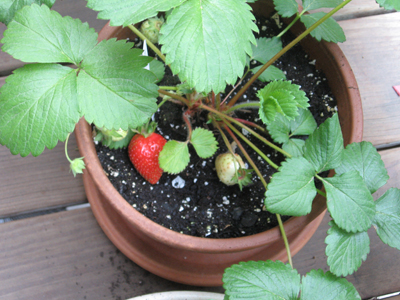 |
| Photo from http://www.kathrynseckman.com/ |
 |
| Photo from http://forums2.gardenweb.com/ |
http://www.rhs.org.uk/Plants/Plant-features/Blackberries-and-hybrid-berries
This next list will focus on plants that can thrive in containers in my particular hardiness zone, with my local short growing season (because it snows until April and freezes solid in November). I'll be relying heavily on this post, which does a fantastic job of making it stupid-easy to plan gardens no matter what hardiness zone you live in. Also it helps you find your zone.
- Fruit trees: Any dwarf variety can be grown in a large enough pot. Citrus and other warm weather natives will live inside during the winter and be happy, but you'll need to overwinter deciduous trees somewhere less cold than outside if you live somewhere that gets too cold (I feel like zone 5 is when you start needing to take pots inside, but that might be a despicable lie). I'm not going to list varieties because I am done with making this list and also, just go to a local nursery and inquire after dwarf fruit trees.
This next list will focus on plants that can thrive in containers in my particular hardiness zone, with my local short growing season (because it snows until April and freezes solid in November). I'll be relying heavily on this post, which does a fantastic job of making it stupid-easy to plan gardens no matter what hardiness zone you live in. Also it helps you find your zone.








No comments:
Post a Comment